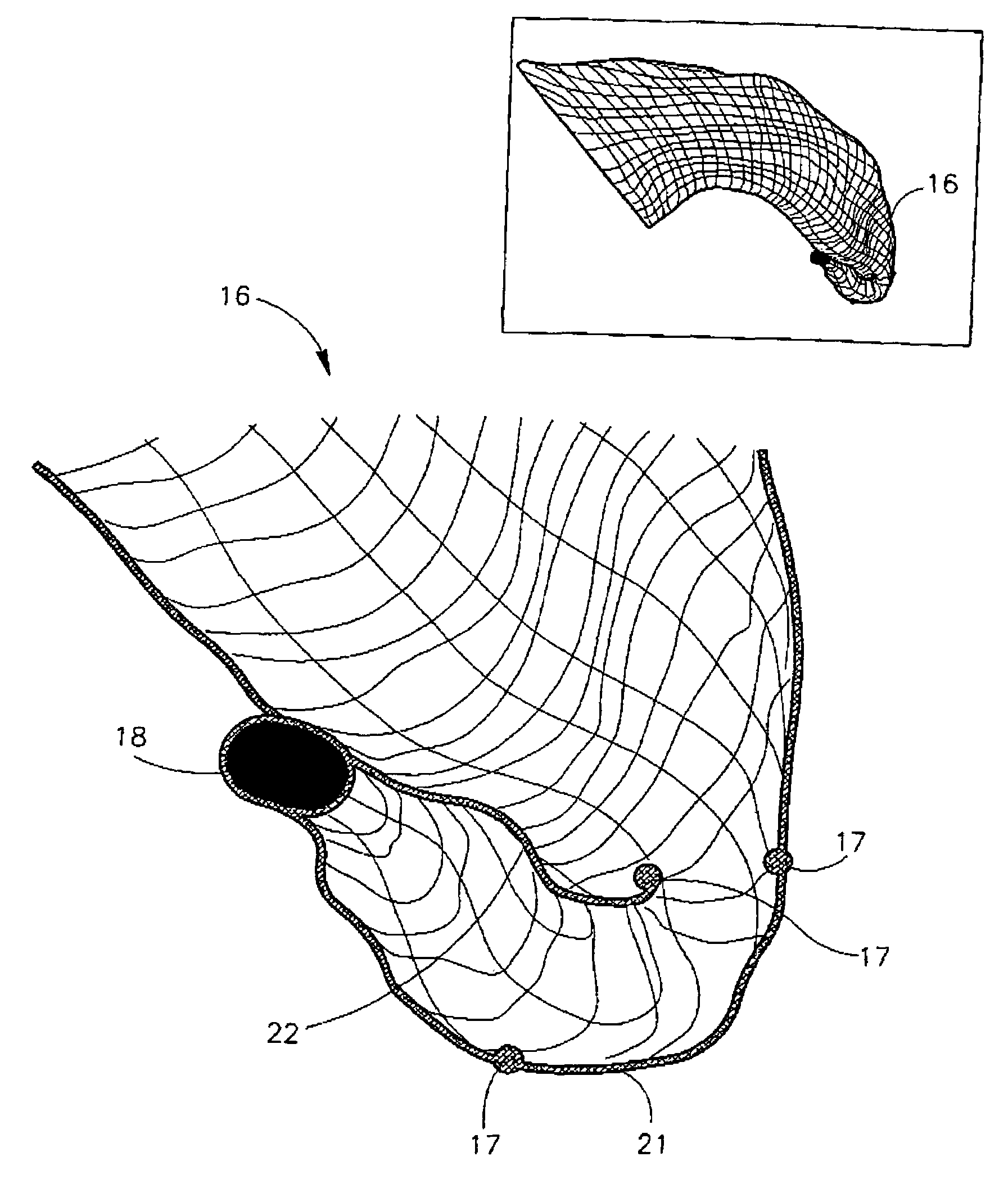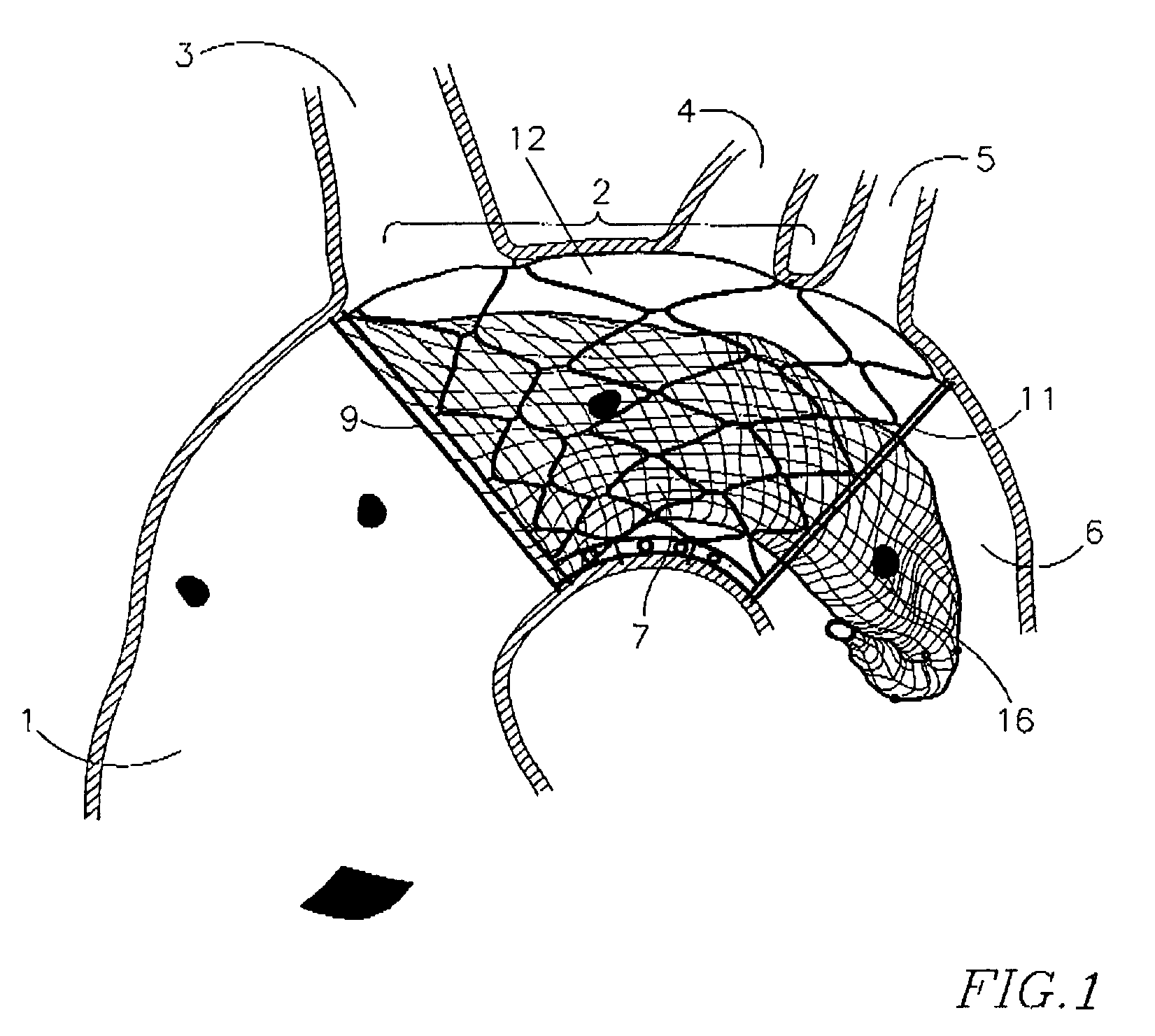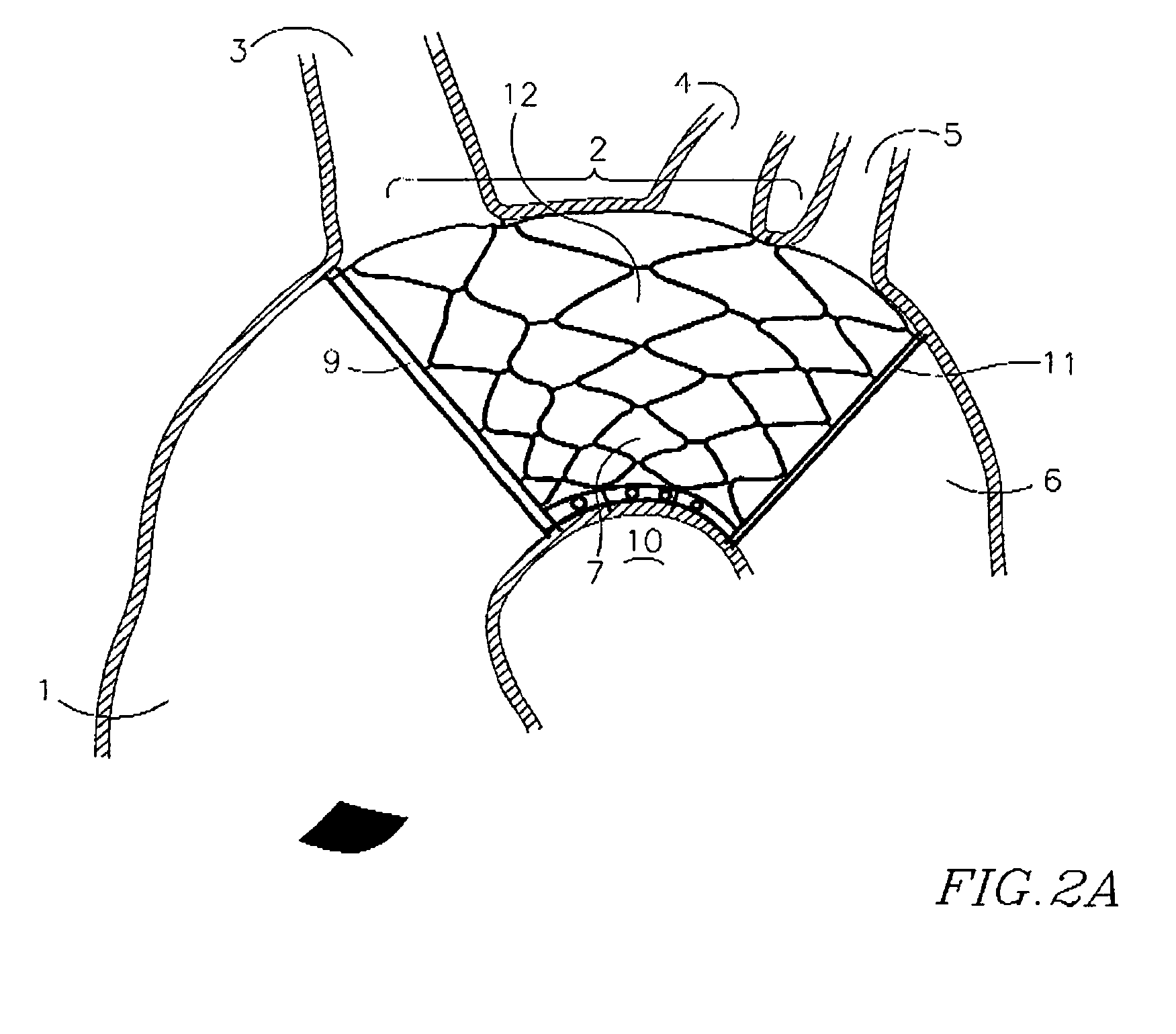Endovascular device for entrapment of particulate matter and method for use
a technology of endovascular devices and particulates, which is applied in the direction of catheters, sensors, diaphragms, etc., can solve the problems of pulmonary embolism, often-dead disease, and acute reduction of blood supply, and achieves the effect of ischemia, disability and death
- Summary
- Abstract
- Description
- Claims
- Application Information
AI Technical Summary
Benefits of technology
Problems solved by technology
Method used
Image
Examples
Embodiment Construction
[0030]In the following description, various aspects of the present invention will be described. For purposes of explanation, specific configurations and details are set forth in order to provide a thorough understanding of the present invention. However, it will also be apparent to one skilled in the art that the present invention may be practiced without the specific details presented herein. Furthermore, well-known features may be omitted or simplified in order not to obscure the present invention.
[0031]Embodiments of the present invention provide for a device for protecting body organs such as the brain and hence bodily tissues, against damage caused by particulate matter such as an embolus. The device is typically in a stent configuration, for insertion in a large artery such as the aorta (as shown below), structured as a filter and / or with filtering material. Other configurations are possible. The filtering structure is typically made of at least one layer of mesh, which is att...
PUM
 Login to View More
Login to View More Abstract
Description
Claims
Application Information
 Login to View More
Login to View More - R&D
- Intellectual Property
- Life Sciences
- Materials
- Tech Scout
- Unparalleled Data Quality
- Higher Quality Content
- 60% Fewer Hallucinations
Browse by: Latest US Patents, China's latest patents, Technical Efficacy Thesaurus, Application Domain, Technology Topic, Popular Technical Reports.
© 2025 PatSnap. All rights reserved.Legal|Privacy policy|Modern Slavery Act Transparency Statement|Sitemap|About US| Contact US: help@patsnap.com



